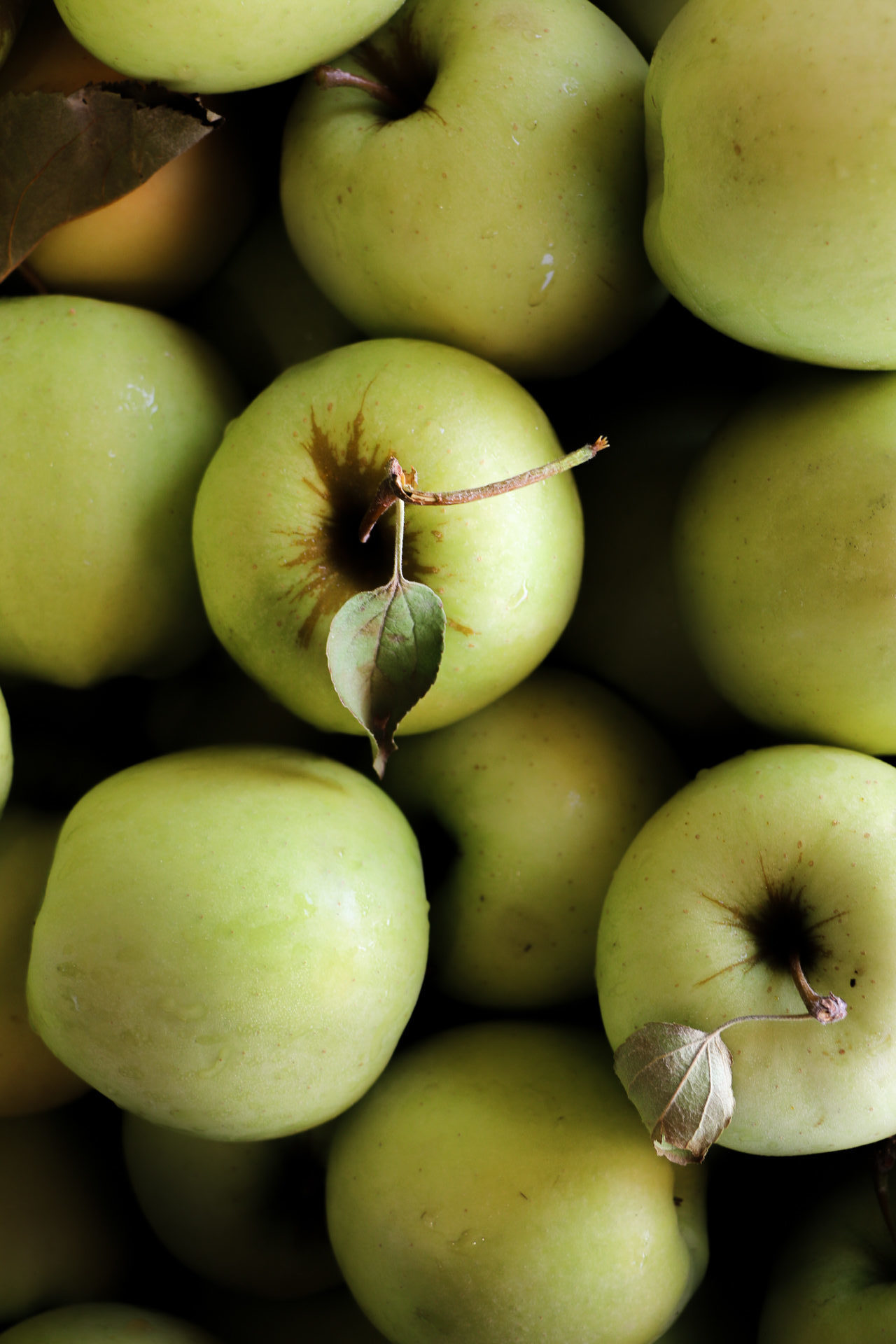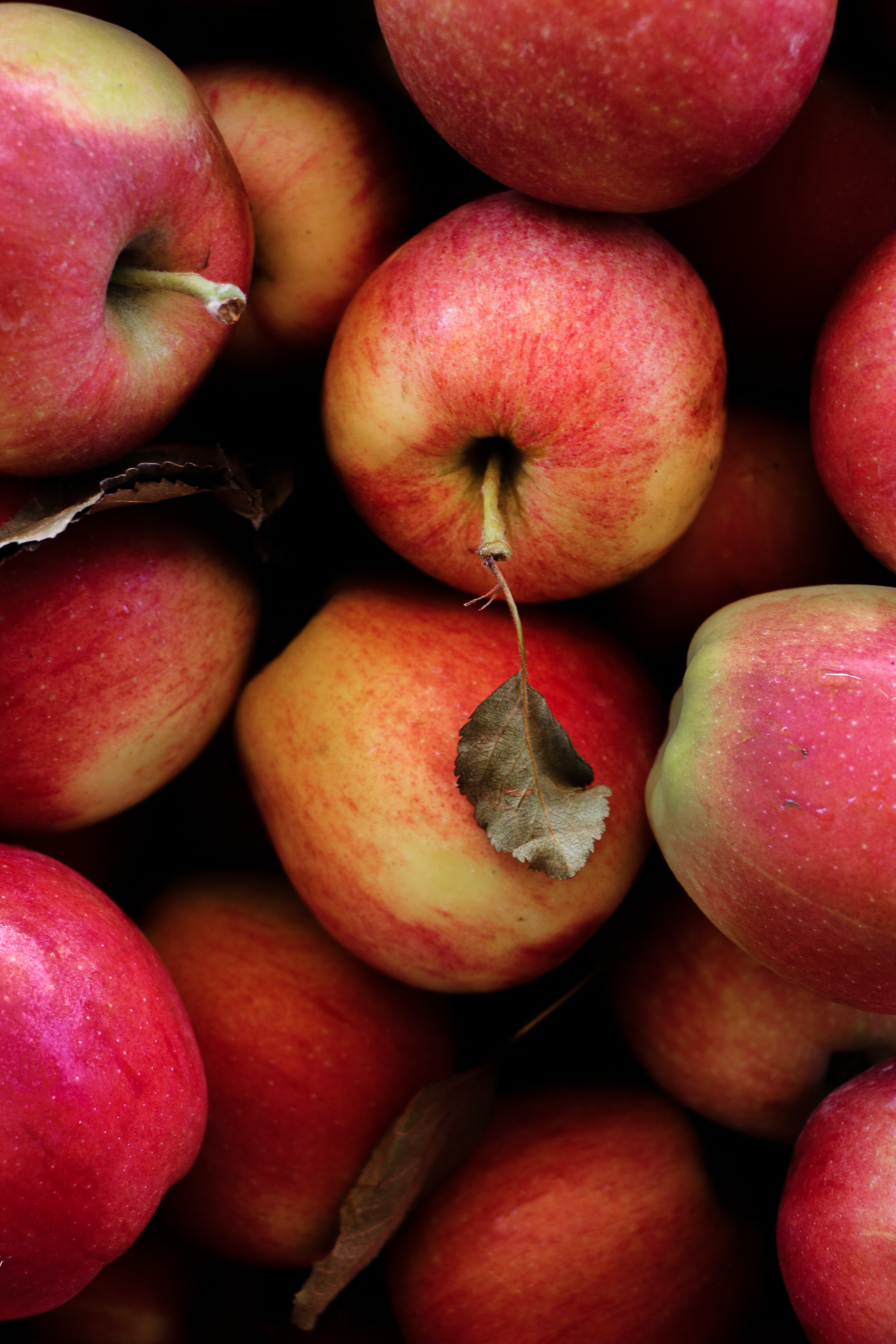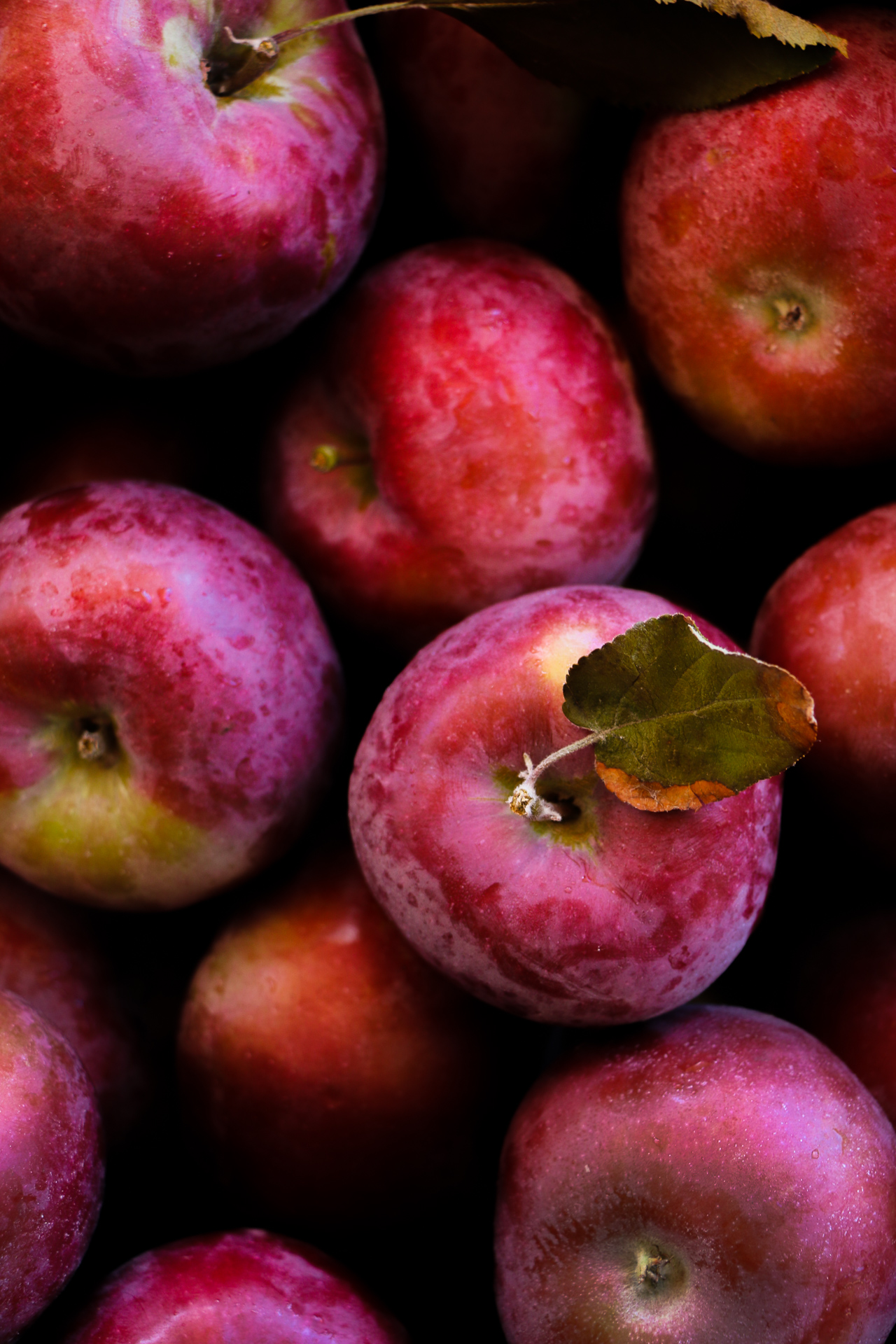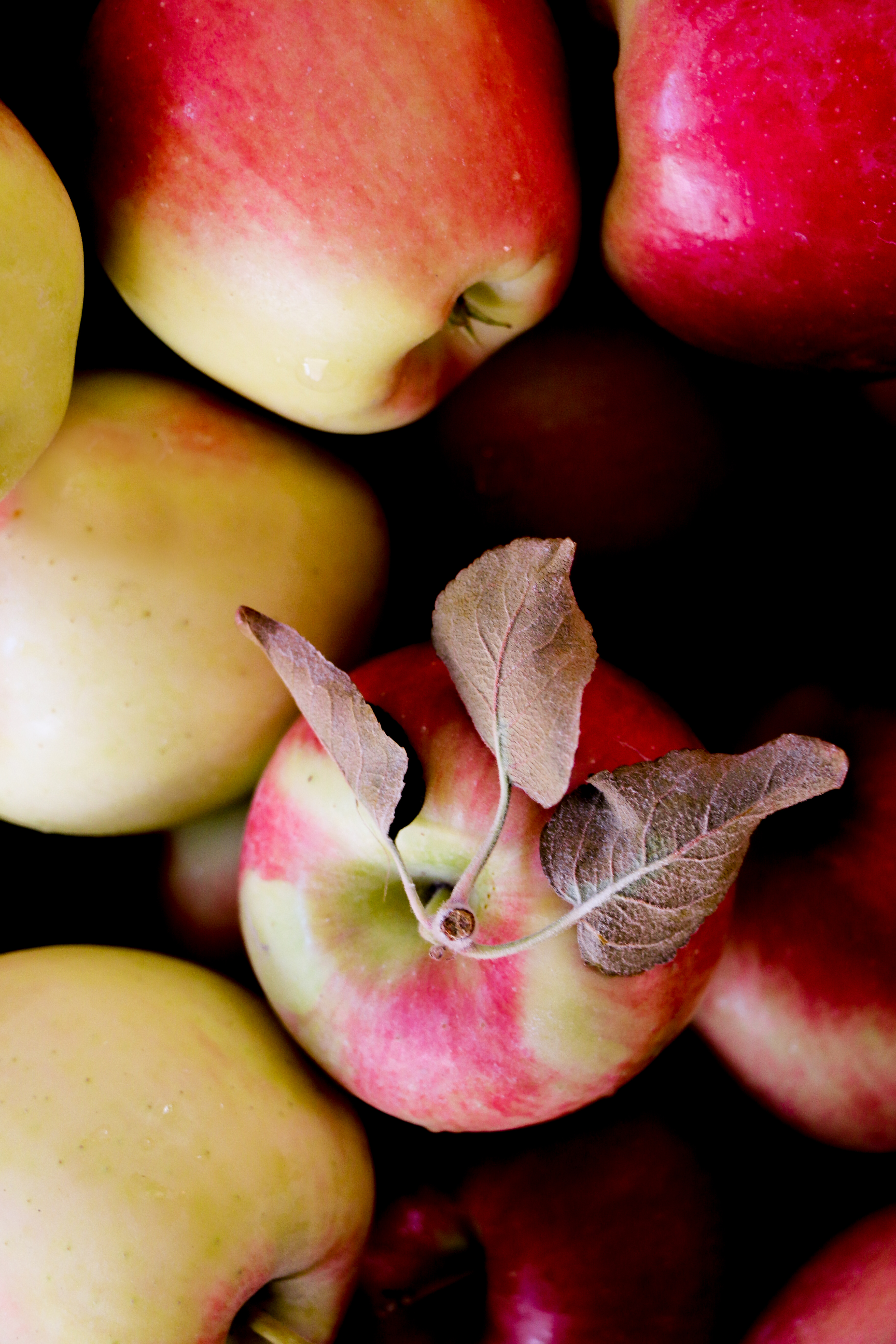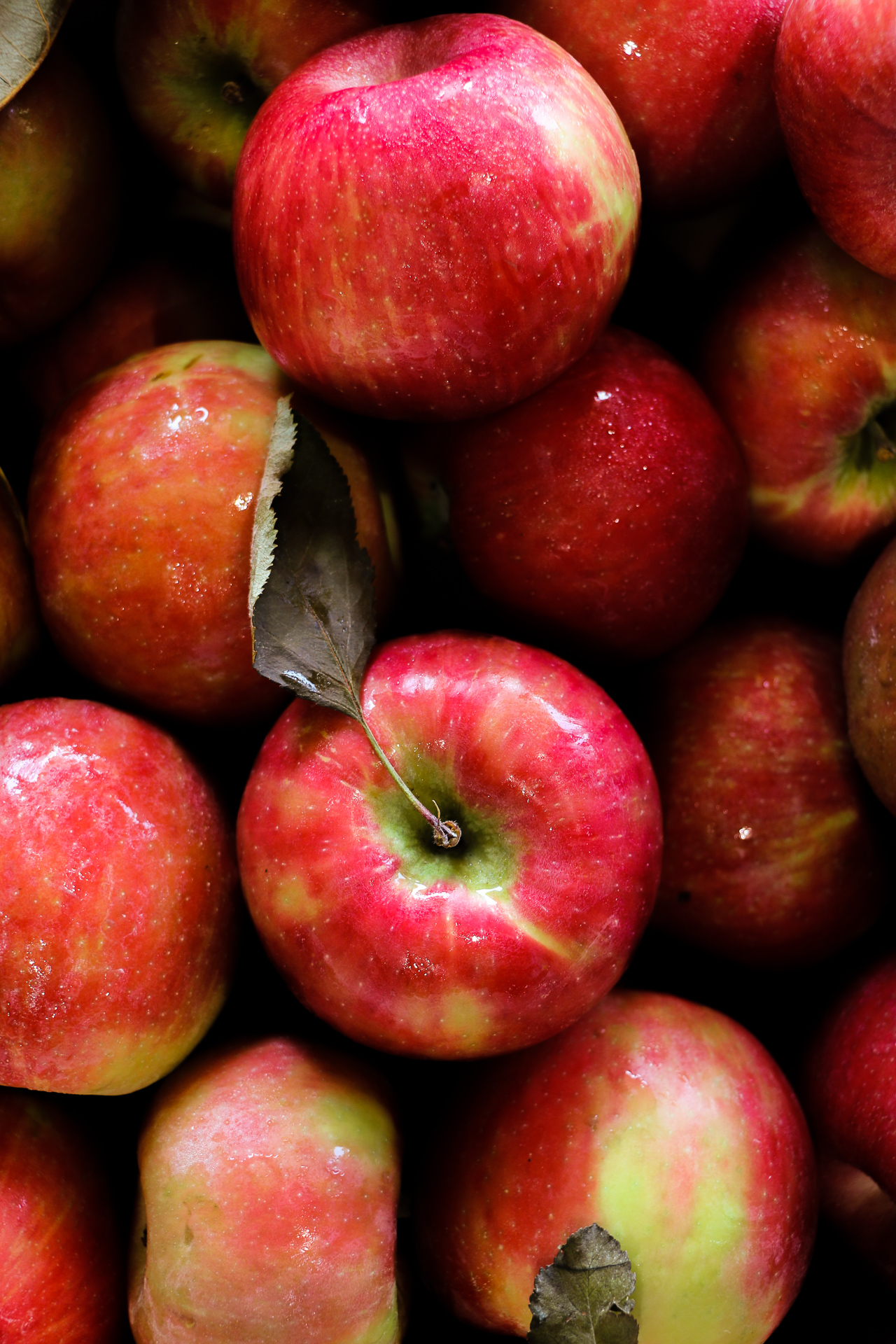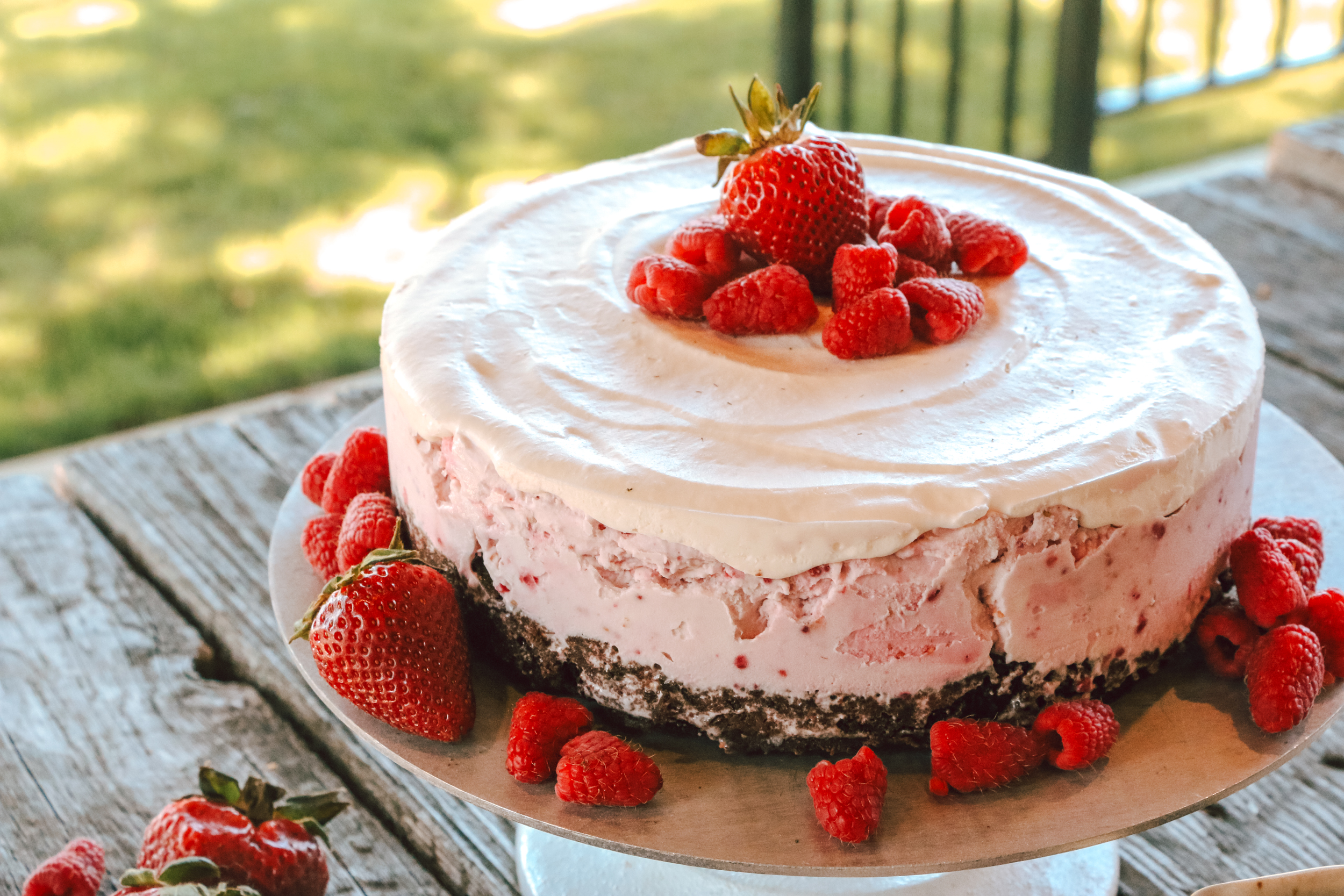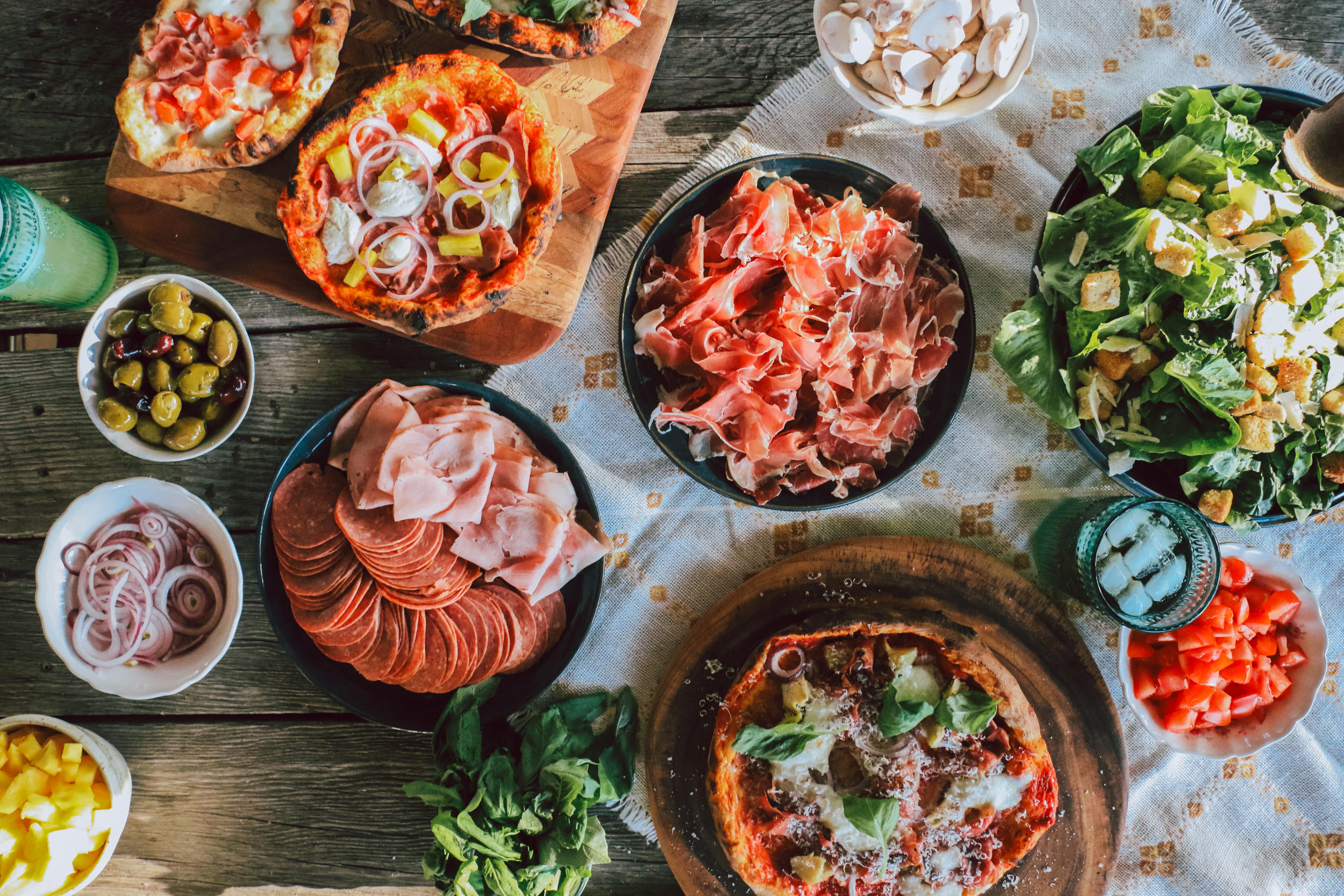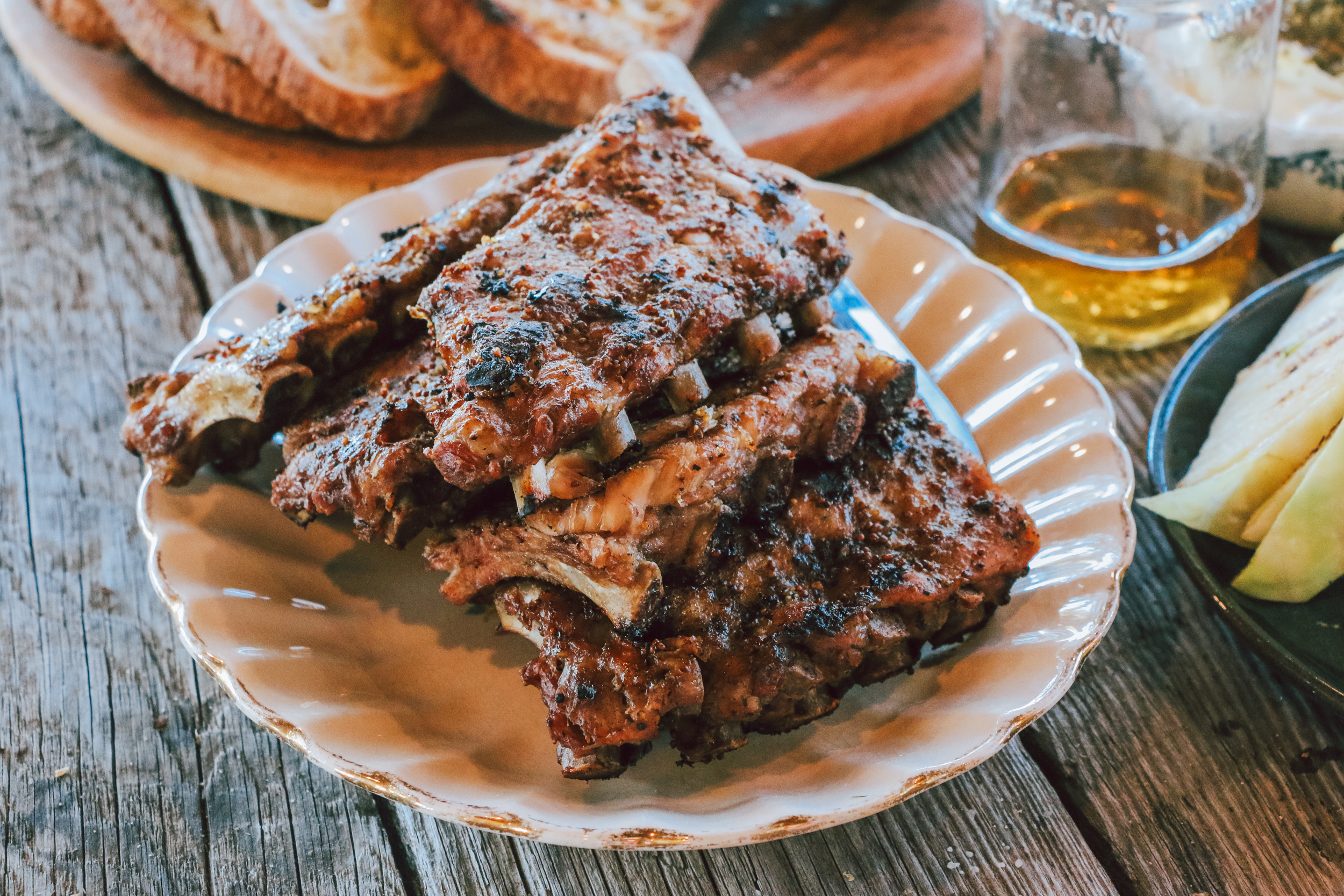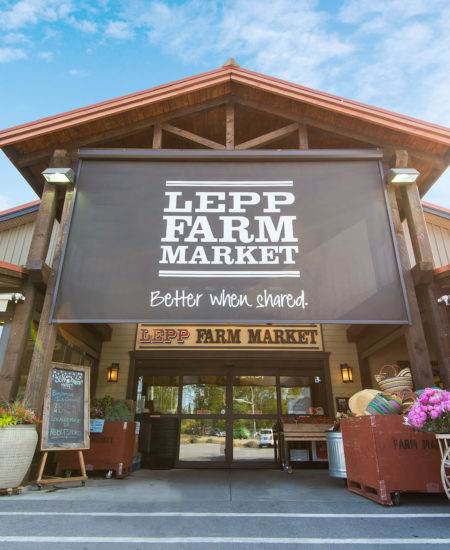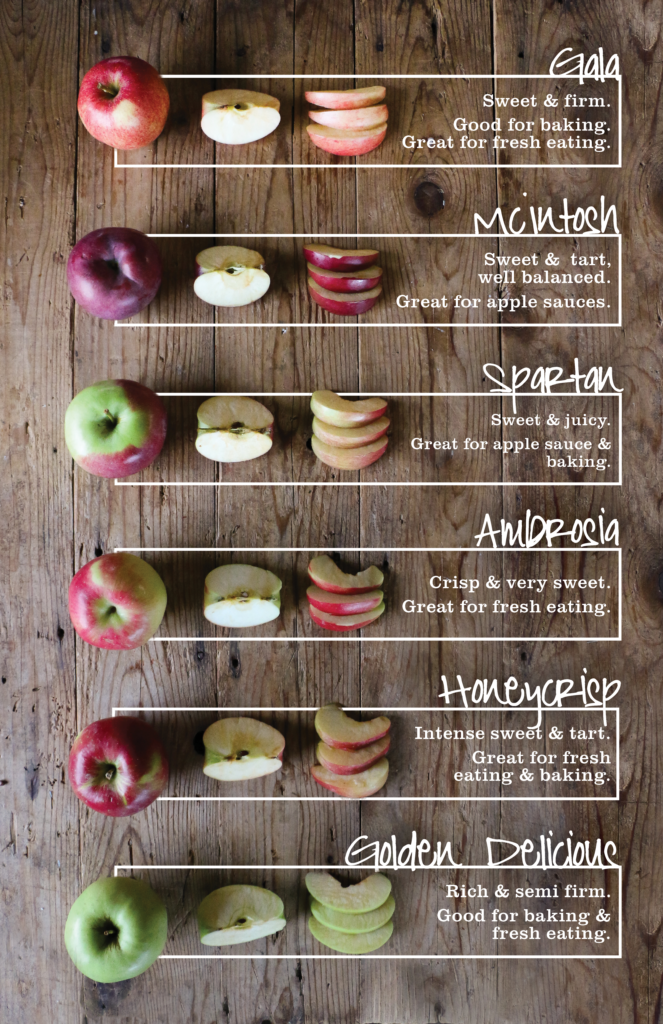
Above: Okanagan apples currently in season (as of mid September). Keep an eye out for more varieties at the market later in October!
Gala Apples
Taste & Texture: Sweet, firm.
Fun Fact: Gala apples originated in New Zealand. The name “Royal Gala” began when Queen Elizabeth deemed them her favourite. Now we just shorten it to gala!
Best Used For: Fresh-eating, good for baking when paired with a tart apple.
McIntosh Apples
Taste & Texture: Crisp, juicy, well balanced sweet & tart flavour.
Fun Fact: Discovered by Canadian John McIntosh in Ontario on his family farm. He found several unidentified tree seedlings growing and one of the trees produced an apple that was noted to be of exceptional quality and was given the family name, McIntosh.
Best Used For: Breaks down well for apple sauce or apple butter. Early in the season they’re good for fresh eating, but as they store longer they are better for sauces.
Spartan Apples
Taste & Texture: Sweet, crisp skin with a softer flesh, exceptionally juicy.
Fun Fact: The Spartan Apple originated in BC, as part of the Pacific Agri-Food Research Centre’s apple-breeding program in Summerland.
Best Used For: Apple Sauce, Baking
Ambrosia Apples
Taste & Texture: Crisp, very sweet.
Fun Fact: Ambrosia apples originated here in BC! In the early 90s, these apples were grown for the first time in the Okanagan (Similkameen Valley). Completely by chance, the Ambrosias came abot when an orchard previously used for Red Delicious & Golden Delicious apples was replanted with Jonagolds. The name Ambrosia means “food of the gods.”
Best Used For: fresh eating.
Golden Delicious Apples
Taste & Texture: Rich, semi firm.
Fun Fact: in 1916, the Golden Delicious apple was marketed commercially as a companion to the Red Delicious, but the varieties are actually not related.
Best Used For: Baking, fresh eating.
Honeycrisp Apples
Taste & Texture: Crisp, Sweet yet Tart
Fun Fact: The Honeycrisp apple was developed through traditional cross-pollination methods at the University of Minnesota’s apple breeding program. At first, it was marked for the discard pile, but a young researcher, David Bedford, took a second bite and decided to continue testing it. Unlike the vast majority of modern commercial produce, the Honeycrisp apple wasn’t bred to grow, store or ship well. It was bred for taste: crisp, with balanced sweetness and acidity.
Best Used For: Fresh eating, baking
Apple Storage Tips
With the right varieties of apple and the right care, you can keep your apples for months! Here are a few tips to help your apples last longer.
- Take them out of plastic before storing.
- The biggest factor here is temperature! Apples are happiest between 1 and 5 degrees.
- If you store your apples in the fridge, use the crisper drawer or keep them in a perforated plastic bag.
- Keep your apples out of direct sunlight, somewhere dark is preferred.
- Be gentle with your apples. Apples bruise easily and even small marks will decrease their longevity.
- Keep your apples away from bananas and tomatoes. These fruits naturally produce ethylene gas which will soften your apples ripening them faster.
- If you notice any bruises or blemishes on an apple, separate it from the rest of the apples – it’s true that one bad apple spoils the bunch!
- Keep apples away from strong smelling foods, as they easily absorb odors.
Note: The more tart the apple flavour, the longer it will take to turn brown after cutting! This is due to their acidity – use lemon juice to help extend the apple’s freshness in salads, or fresh snacks. The acidity of an apple strengthens the pectin used in pie recipes, helping the apple to keep a firm texture while baking – this is why the tart varieties do better in pie baking than their low-acidity counterparts.


